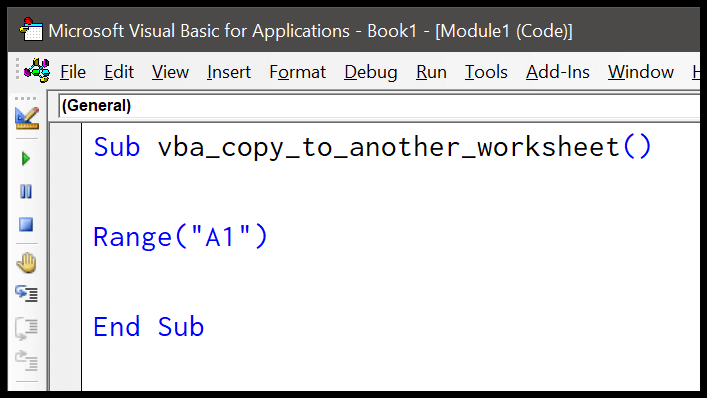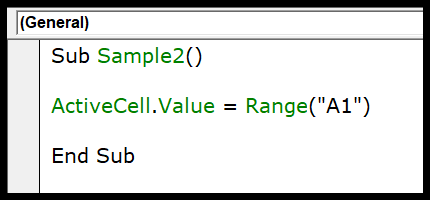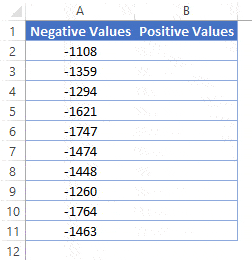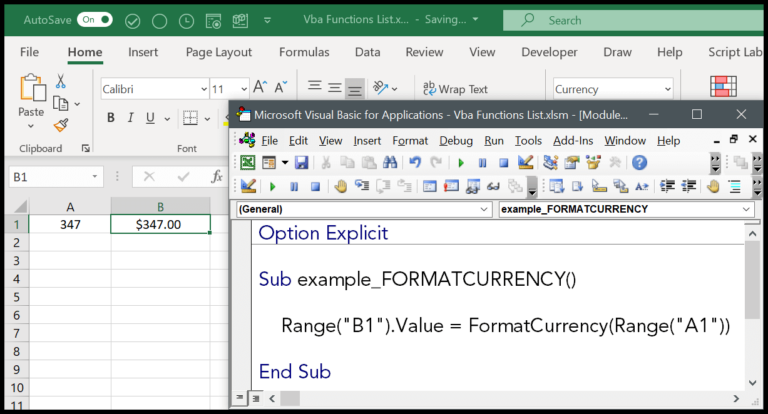Sales enablement within the SaaS sector represents a strategic approach that aims to empower sales teams with the resources they need – think tools, content, and information – to sell more effectively. It’s a multifaceted concept that taps into collaboration between departments, especially marketing and sales, to ensure that sales reps are equipped with insightful data, pertinent content, and the right digital tools. As SaaS products often require nuanced explanations and tailored customer conversations, the role of sales enablement is to create a bridge between what the sales team needs and what the marketing team produces.
Shifting to a ‘revenue enablement’ focus, successful SaaS companies are blurring the lines between sales, marketing, and customer success. This broader context of enablement becomes a joint effort to drive sales productivity. For sales reps, this means having access to not only traditional sales training but also real-time data and analytics that provide a deeper understanding of customer needs and behaviors. These insights ensure that every customer interaction is informed and strategic.
To frame a SaaS sales enablement strategy, companies are fostering an environment where sales teams are not only knowledgeable about their own products but also adept at navigating the nuances of their clients’ industries. Whether it’s through access to advanced sales intelligence tools or tailored content creation for different stages of the buyer’s journey, the goal is to create a sales force that’s agile, informed, and capable of engaging and retaining customers with efficiency.
Understanding SaaS Sales Enablement
Before diving into the specifics, it’s essential to recognize that sales enablement for SaaS is a strategic, ongoing process that equips sales teams with the tools and knowledge they need to engage leads and secure customers effectively.
Defining Sales Enablement in SaaS
Sales enablement in the context of SaaS refers to the systematic approach to equipping sales reps with resources. These resources typically include tools, content, and information necessary to sell effectively. In a SaaS business, the sales process is particularly fast-paced and often complex due to the nature of software as a service. A well-defined sales enablement strategy therefore serves as the backbone for sales operations, ensuring that reps have a clear understanding of the product and can articulate its value proposition confidently.
Key Components of a SaaS Sales Enablement Strategy:
- Training: Comprehensive programs to deepen reps’ product knowledge.
- Content: Tailored materials like case studies and demo videos.
- Tools: CRM software and other sales automation tools.
The Importance of Sales Enablement for SaaS
For SaaS companies, sales enablement isn’t just beneficial; it’s crucial for success in a competitive market. It ensures that sales teams are aligned with marketing strategies and are fully prepared to turn prospects into paying customers. With the rapid evolution of SaaS products, continuous learning and adaptation are fundamental, and sales enablement provides the structure to support that growth.
Why Sales Enablement Matters for SaaS:
- Faster Sales Cycles: Efficient processes lead to quicker conversions.
- Better Alignment: Syncs sales and marketing efforts for cohesive messaging.
- Higher Retention: Informed sales reps can better support customers, improving satisfaction and retention.
Building a Sales Enablement Strategy
Building a robust sales enablement strategy requires precise goals, tight alignment between sales and marketing, and fostering an environment of continuous learning. It’s about equipping the sales team with the right tools and insights for maximum effectiveness.
Setting Objectives and Goals
The first step in creating a strong sales enablement strategy is clearly defining objectives and goals. These should be measurable and align with broader company targets. For example, one might set a goal to increase the sales pipeline by 20% quarter-over-quarter. It’s essential to have these benchmarks to guide the strategy and measure progress.
Aligning Sales and Marketing Teams
Alignment between sales and marketing teams is non-negotiable. They should operate not in silos but as a unit, sharing insights, strategies, and materials. This partnership ensures consistency in messaging and optimizes the customer journey from the first touchpoint to the closing of sales.
- Shared objectives: Both teams need to be on the same page regarding the company’s targets.
- Regular communication: Weekly sync-up meetings can help maintain this alignment.
- Co-created resources: Marketing materials should be developed in consultation with sales to ensure they meet the boots-on-the-ground needs of the team.
Establishing a Continuous Learning Culture
Training is ongoing, not a one-off event. A sales enablement strategy must prioritize a culture where learning is continuous. This can involve periodic training sessions, access to a library of resources, and real-time coaching.
- Online courses and webinars
- In-person workshops and shadowing opportunities
- A repository of sales best practices and case studies
Each sales representative should understand the product and the market intricacies to engage in meaningful conversations with prospects. This knowledge translates into better customer experiences and, subsequently, more successful sales outcomes.
The SaaS Sales Cycle
The SaaS sales cycle involves a nuanced approach where businesses engage with prospects from initial discovery to the final purchase. The length and complexity of this cycle can vary significantly depending on the product and the customer’s needs.
Understanding the SaaS Sales Cycle Length
The length of the SaaS sales cycle can be influenced by multiple factors such as the complexity of the SaaS product, the price point, and the target customer segment. Generally, higher-cost solutions require a longer sales cycle due to the need for more in-depth conversations and a greater emphasis on building trust.
- Short cycle: Typically seen with lower-cost, simpler SaaS offerings.
- Long cycle: More common with complex, enterprise-level solutions.
Businesses need to tailor their strategies to effectively engage throughout these varying durations to maintain interest and momentum.
Optimizing Each Stage of the Sales Cycle
To optimize the SaaS sales cycle, it’s crucial to understand and refine each stage.
- Prospecting: Identifying potential customers who could benefit from the SaaS offering.
- Initial Contact: Engaging with these prospects through personalized outreach.
- Demonstration: Showcasing how the SaaS product meets the prospects’ specific needs.
- Objection Handling: Addressing any concerns or questions the prospect may have.
- Closing: Finalizing the deal with a strong value proposition and a clear call to action.
- Post-Sale: Providing excellent customer support to ensure success and encourage future upgrades or referrals.
By analyzing performance at each stage, businesses can identify bottlenecks and opportunities to improve their sales process and engagement strategies.
Effective Resources and Tools
Choosing the right combination of tools and resources is critical for a SaaS sales enablement strategy. They should not only align with the company’s sales process but also provide tangible value by integrating seamlessly into the existing tech stack.
Choosing the Right Sales Enablement Tools
The market offers a myriad of sales enablement software options, each with its unique features. Prioritizing tools that offer comprehensive analytics and content optimization can be a game changer. For instance, CRM software remains a cornerstone in managing customer relationships effectively. Quality sales enablement platforms should integrate well with CRM systems to ensure data consistency and ease of access.
- Analytics and Reporting: Tools that provide insights on sales performance and customer engagement.
- Content Management: Systems for organizing and accessing sales materials efficiently.
- Training and Coaching: Software supporting ongoing sales education and skills development.
It’s about striking the right balance between functionality and usability, ensuring the tech stack adds value without overwhelming sales teams.
Leveraging Technology for SaaS Sales
In SaaS sales, technology isn’t just about managing relationships but also about shortening sales cycles and increasing win rates. The best sales enablement tools not only empower sales teams but are tailored to the unique demands of selling SaaS products.
- Automation: Technologies that automate routine tasks to focus on selling.
- Integration: Seamless connection with other tools in the SaaS tech stack for a unified workflow.
- Customer Success: Platforms that support post-sale customer engagement to foster retention.
By harnessing technology effectively, SaaS organizations can achieve higher revenue and better align their sales and marketing efforts.
Optimizing Sales Content and Materials
High-quality sales content significantly boosts a sales team’s effectiveness. It’s essential that materials are not only engaging but also easy to access and use. Optimizing involves both the creation process and the delivery of materials in formats conducive to sales success.
Creating Engaging Sales Content
Engaging sales content starts with understanding the customer’s journey and providing material that resonates at each stage. Sales teams should focus on developing content like case studies which showcase real-world success stories, making the potential impact tangible for prospects. Furthermore, content must be up-to-date, ensuring product marketing information aligns with current offerings and industry standards.
Material Format and Accessibility
The format and accessibility of sales materials play a crucial role in enabling sales efforts. Materials should be:
- Easy to find: Organized in a centralized content management system.
- Diverse in format: Ranging from text documents and PDFs to interactive demos that cater to various learning styles and stages in the sales process.
- Mobile-friendly: To allow sales reps to share information on the go.
By providing accessible content in varied formats, sales teams can efficiently leverage these resources to address client questions and present solutions effectively.
Sales Enablement Processes
In the realm of SaaS, sales enablement processes are crucial for equipping sales teams with the right tools and strategies. They ensure that sales operations run smoothly and are backed by data-driven insights.
Developing and Refining Sales Processes
Sales processes in SaaS need constant development and refinement. This is where sales enablement plays a critical role. It’s all about crafting a step-by-step playbook that sales reps can follow. This playbook is a living document, sometimes housed in a digital format for ease of access and updating. It covers everything from prospecting and qualifying leads to closing deals and nurturing customer relationships.
The development of a solid sales process includes:
- Identifying the stages of the sales cycle.
- Mapping out the actions sales reps should take at each stage.
- Integrating customer feedback to continuously improve the sales approach.
Performance analytics are leveraged to monitor how sales tactics perform, which then informs future refinements.
Forecasting and Analytics
Forecasting and analytics bring a forward-looking perspective into sales enablement. They allow a sales team to predict future sales and understand the health of the sales pipeline. Operations can’t run blind; they need the foresight that only data can provide.
Key components include:
- Sales Metrics: They track performance across various stages of the sales funnel.
- Data Reporting: A systematic approach to collecting and analyzing data from sales activities.
- Performance Analytics: These dive deeper into how individual reps and the overall team are meeting targets.
A typical analytics dashboard might highlight:
- Conversion rates
- Average deal size
- Sales cycle length
Using forecasting and analytics, SaaS companies can make informed decisions about where to focus their efforts for the best results. It’s not just about the numbers; it’s about understanding what the numbers mean and acting accordingly.
Training and Onboarding
In the fast-paced world of SaaS, the right training and onboarding can make all the difference. Sales reps need to hit the ground running, armed with skills and knowledge to succeed.
Programs for New Sales Reps
New sales reps typically undergo a structured onboarding program to familiarize themselves with the product and internal processes. These programs combine education and practical experience, crafted to quickly integrate new team members into the team. Sales enablement tools, such as content organization systems like HighSpot, are often used to make training materials easily accessible.
- Week 1-2: Product deep-dives, company culture workshops.
- Week 3-4: Shadowing sessions, initial call handling.
Continual Training and Skill Upgradation
The best sales teams understand that onboarding is just the start. Continual training is essential to keep skills sharp and knowledge up to date. A mix of coaching sessions, and updates on the latest product features and market shifts, ensure reps stay competitive.
- Monthly Training: New feature rollouts, advanced sales techniques.
- Quarterly Workshops: Market trend analysis, peer learning sessions.
Sales reps benefit greatly from ongoing education, which not only enhances their selling abilities but also keeps them engaged and motivated.
Measuring Success with KPIs
To keep a SaaS sales enablement strategy on the right track, it’s essential to focus on specific metrics that reflect progress and performance. Careful monitoring with the right KPIs helps in understanding what’s working and where to improve.
Sales Enablement Metrics and KPIs
Win Rate: This is a direct indicator of sales efficiency. Calculated as the percentage of deals won out of the total deals pursued, a higher win rate suggests that sales enablement tools and strategies are effective.
-
Lead Scoring: By assigning values to leads based on their behavior and engagement, a company can prioritize high-potential prospects. Precise lead scoring can boost the conversion rates significantly.
-
Net Promoter Score (NPS): Although not exclusive to sales enablement, NPS measures customer satisfaction and loyalty, offering insights into the sales experience and potential for referrals.
Deal Size
- Average: Observing the average size of closed deals can indicate the effectiveness of sales enablement in helping reps upsell or cross-sell.
- Growth: Looking at how deal sizes change over time can signal if the sales team is improving in targeting or communicating value.
Using Data to Drive Sales Decisions
A company thrives by turning data into actionable insights. For instance:
-
Call Completion Rate: (Number of calls completed / Total number of calls scheduled) x 100. This metric provides a clear picture of the sales team’s engagement level and can pinpoint areas in the process that may require additional support or training.
-
Lead-to-Opportunity Conversion Rate: This ratio assesses how effectively marketing efforts and initial customer interactions are creating genuine sales opportunities.
By honing in on these KPIs, SaaS companies can refine their sales processes, adjust strategies in real time, and ultimately achieve better alignment between sales efforts and business outcomes.
Scaling SaaS Sales with Best Practices
In scaling a SaaS sales program, companies focus on developing strategies and best practices that ensure steady sales growth. They prioritize clear communication and meticulous management of opportunities and risks.
Effective Communication Strategies
- Clarity and Brevity: They keep the message simple and straightforward. This involves using clear language and avoiding jargon that might confuse potential customers.
- Consistent Messaging: Across all channels, the tone and core messages are kept consistent. This helps in building a reliable brand image.
Managing Opportunities and Risks
-
Opportunity Assessment:
- Prioritization: They assess and prioritize sales opportunities using a set of criteria like deal size, close probability, and strategic value.
- Tracking: Opportunities are tracked with a systematic approach, often through CRM tools, to ensure nothing slips through the cracks.
-
Risk Mitigation:
- Identification: Risks are identified early through customer feedback and market analysis.
- Plans and Processes: They have contingency plans in place, preparing for various scenarios that could impact the sales pipeline.
Frequently Asked Questions
When tackling sales enablement for SaaS products, folks often have a handful of questions they need answers to. This section aims to clear up some common queries with straight-shooting insights.
How can you develop an effective sales enablement strategy for SaaS products?
To craft a sales enablement strategy that knocks it out of the park, a SaaS company should focus on training its team with the latest sales methodologies and equipping them with top-notch resources like case studies and product demos.
Can you give some examples of successful sales enablement initiatives in the SaaS industry?
Successful initiatives often include creating a content library accessible to sales reps, implementing training programs tailored to SaaS sales, and setting up metrics to measure the effectiveness of the sales enablement strategy.
What essential elements should be included in a sales enablement plan for a SaaS company?
An ironclad sales enablement plan for a SaaS company should include detailed product training, up-to-date sales and marketing collateral, clear communication channels, and robust performance analytics.
What roles and responsibilities does a sales enablement professional have in a SaaS business?
A sales enablement pro in the SaaS realm typically handles the creation of sales content, orchestrates training sessions, and evaluates the tools and technologies that the sales team employs to close deals effectively.
How does CRM integration enhance sales enablement efforts in a SaaS environment?
Integrating CRM software bolsters sales enablement by providing sales reps with real-time customer data, enabling personalized interactions, and thereby shortening the sales cycle and boosting conversion rates.
What are the key components of SaaS sales management that differentiate it from traditional sales management?
SaaS sales management hinges on understanding the subscription-based business model, focusing on customer success as a growth driver, and leveraging data analytics to inform strategic decisions and refine the sales process.



